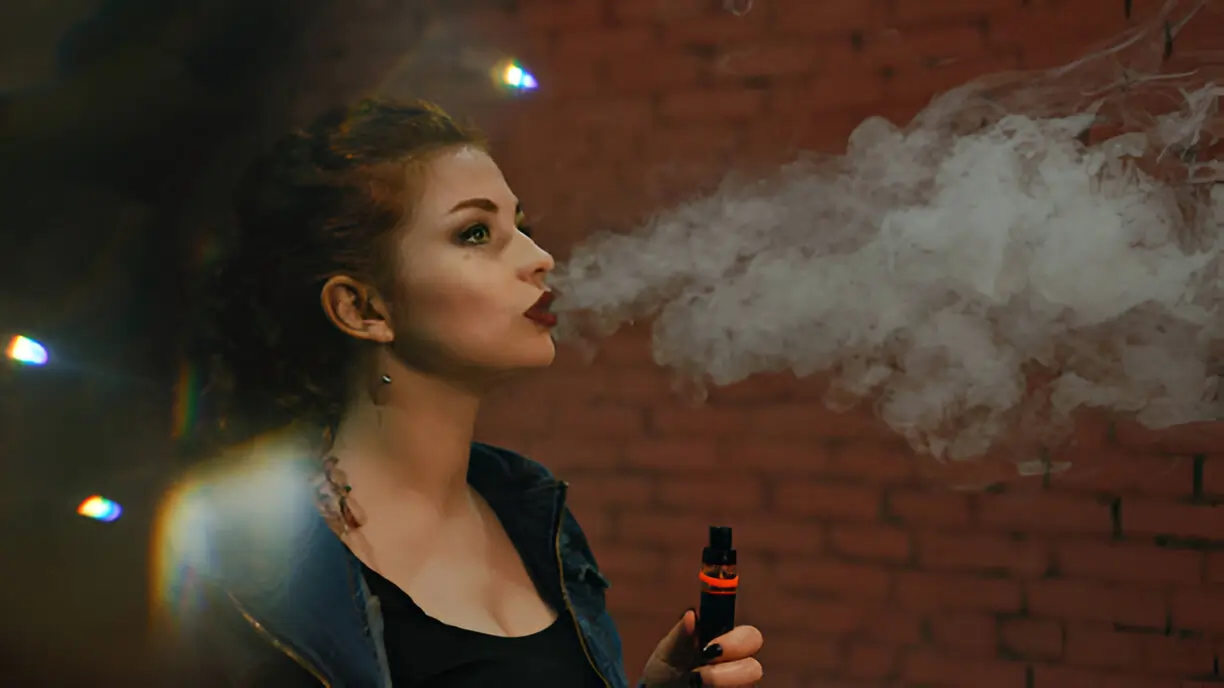The Allure of Vaping: A Marketing Masterstroke
The rapid rise of vaping among teens and young adults results from far more than just simple convenience or fleeting curiosity. Vape companies have orchestrated sophisticated campaigns that cultivate a chic and rebellious allure for their products, deliberately crafting a public image that radiates modernity and effortless style. Glossy advertisements fill online feeds and city billboards, while strategic partnerships with high-profile influencers and even celebrities help frame vaping as an up-to-the-minute lifestyle choice. These coordinated campaigns rarely ask, are e-cigarettes safe? Instead, they pour effort into aesthetics and emotional triggers, showcasing vapes as sleek, tech-savvy accessories that align with a fashionable, enjoyable, and seemingly harmless existence.
This persistent marketing sleight of hand obscures an unsettling truth: vapes frequently contain high levels of nicotine, other addictive substances, and hazardous chemicals not always fully disclosed. Through careful image management and selective messaging, companies exploit insecurities and aspirations. They turn vaping into a must-have item, fueling social proof and group identity among young consumers who crave acceptance or fear being left out. As a result, vaping rates among youth have soared in recent years, with these marketing tactics echoing—and even surpassing—the manipulative playbooks of the tobacco industry’s most successful eras.
Flavors That Conceal the Risks
A particularly insidious tactic employed by vape companies is the creation of a vast array of sweet and fruity flavors. Flavor options such as bubblegum, cotton candy, strawberry milkshake, and even complex dessert blends are meticulously designed to lower the psychological barrier to entry for young people. Beneath their enticing taste and vibrant packaging, many vape juices contain compounds known to harm the lungs. Chief among these is diacetyl—a chemical linked to a serious, irreversible lung condition popularly known as “popcorn lung.” Other ingredients, such as formaldehyde and various volatile organic compounds, pose their own risks when inhaled. Studies have demonstrated that most youths who try flavored e-cigarettes transition rapidly to regular nicotine use, solidifying habits before they fully grasp the potentially lifelong health implications. The World Health Organization has warned that flavoring agents normalize and encourage vaping, making it a widespread social phenomenon rather than a niche adult behavior. A simple image showing a variety of colorful, candy-like vape pens in the foreground, with a subtle, faded warning sign or health hazard symbol in the background.
Social Media: The New Frontier for Vape Advertising
In the digital era, where younger generations spend a significant amount of their downtime online, vape companies have effectively shifted their marketing strategies to target these audiences more directly. Social media platforms have become saturated with vape-related content, often disguised as entertaining “vape tricks” compilations, casual product reviews, or aspirational lifestyle vlogs. Influencers and content creators, sometimes with millions of followers, depict vaping as a harmless personal choice or a fun activity, rarely mentioning any connection to health issues or regulatory guidelines.
According to research, a troubling percentage of vape advertisements and user-generated content on these platforms lack appropriate health warnings, disclaimers, or age-gating mechanisms. The outcome is a virtual world where vaping is not only normalized but also glamorized, often making it seem like an integral part of accepted youth culture. Social media algorithms intensify this exposure, ensuring that trending content is viewed by millions, including vulnerable teenagers and preteens who are particularly susceptible to peer influence.
Misleading Health Claims: A Dangerous Deception
A persistent theme in vape advertising is the presentation of these products as much safer alternatives to smoking cigarettes, or even as tools to help smokers quit altogether. While such claims may sound reassuring, they rarely reflect the consensus among scientists and public health experts. Marketers frequently use phrases like “just water vapor” to downplay the chemical complexity found in most vape liquids. Another overused assertion is that “vaping helps you quit smoking,” but the evidence supporting vaping’s effectiveness as a smoking cessation tool remains limited and hotly debated. The CDC and numerous health organizations have repeatedly issued statements emphasizing that vaping is not without risk, including the risk of nicotine addiction, lung injury, and negative effects on adolescent brain development.
The climate of false reassurance that these claims create can have serious consequences. Many people, lulled by optimistic marketing, overlook real risks or continue to use vapes, assuming the dangers are negligible. This can result in prolonged nicotine dependency or introduce new health threats, including respiratory problems, cardiovascular issues, and impaired neurological development, especially among adolescents whose brains are still maturing.
The Role of Synthetic Nicotine in Marketing
In response to tightening regulations on tobacco-derived nicotine, vape companies have quickly moved to market “tobacco-free” or “synthetic nicotine” products. By highlighting these synthetic versions, companies imply their products are somehow safer or more natural. But this is misleading, as the core health concern remains: nicotine, regardless of its source, is highly addictive and detrimental to health, particularly in teenagers and pregnant people. Researchers found that the majority of social media posts about synthetic nicotine vapes lacked proper health warnings, a trend that perpetuates the vape industry’s history of avoiding honest discussion about their products’ hazards. The swift pivot to synthetic nicotine highlights the industry’s adaptability and its determination to evade evolving regulations, requiring public health advocates to remain vigilant and proactive in countering misleading narratives.
Empowering Consumers Through Education
Public awareness campaigns are now vital to correct misconceptions about vaping, and empower people—especially the younger generations—to make informed choices. Teachers, parents, health professionals, and community advocates all have crucial roles to play in relaying honest, age-appropriate information about the real risks of vaping. Making accurate, science-based information widely available isn’t just about deterring use—it’s also about replacing shame and silence with transparency and truth, empowering individuals and entire communities to challenge the myths and pressures created by the vape industry.
Conclusion: Unmasking the Truth Behind Vaping
Behind the colorful packaging, clever ads, and playful flavors lies a sobering reality: vaping is rife with health risks that rival, and in some ways mirror, the dangers posed by traditional smoking. Yet the industry’s calculated marketing continues to downplay or disguise these dangers, putting millions, especially the youngest and most impressionable consumers, at risk. To fight back, it’s crucial for society to recognize and challenge these tactics through robust, fact-based education and more effective global regulations—ultimately unmasking the toxic truth behind the vape industry’s trendy exterior.
Read more: Home Is More Than Walls: Where the Human Soul Lives – Croudmomentum.com
Stuck in Brooklyn with a Broken Transponder Key—Locksmith For NYC Saved My Day
Why EDI 3PL Integration Is Essential for Business Scalability and Growth








